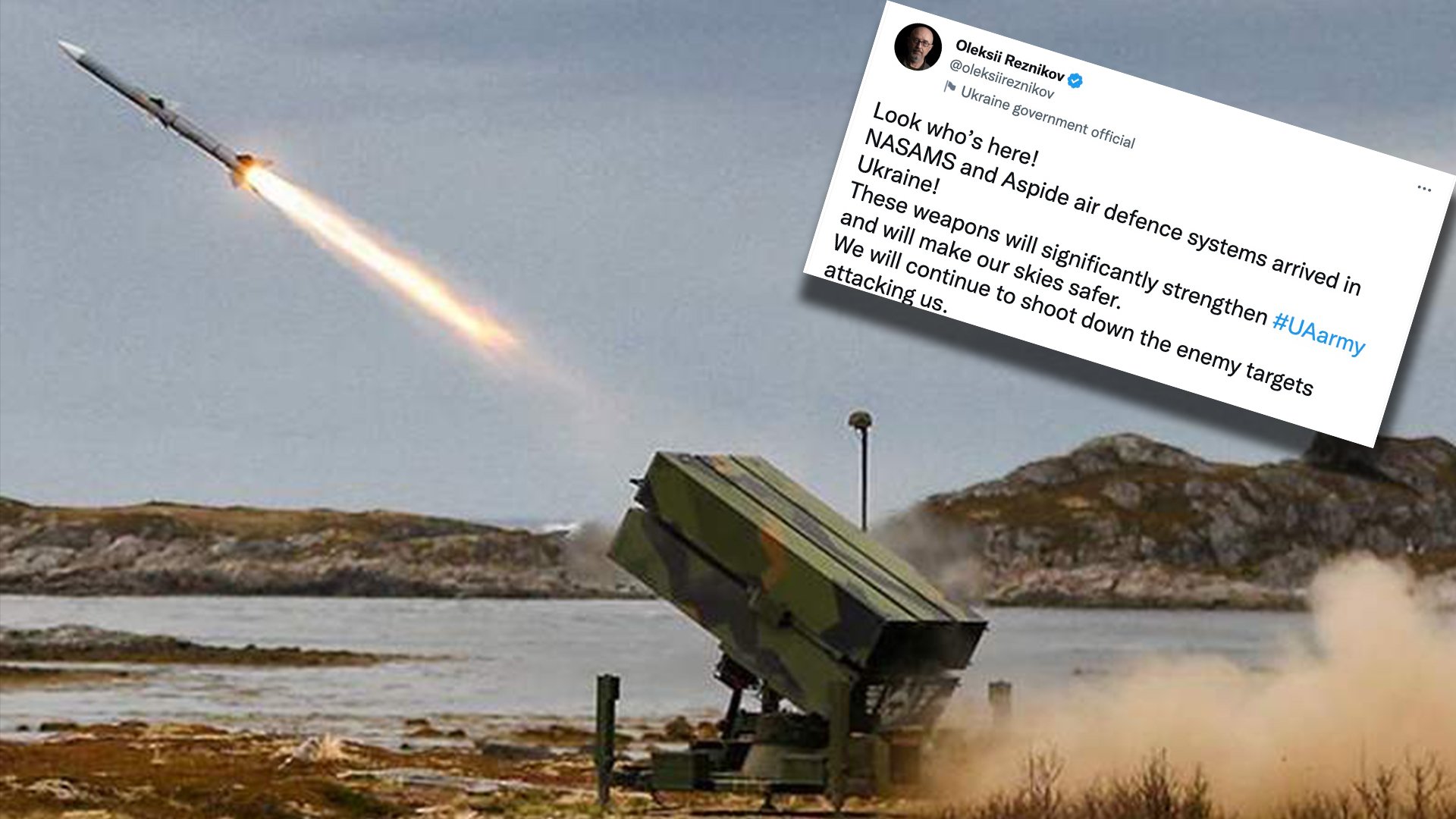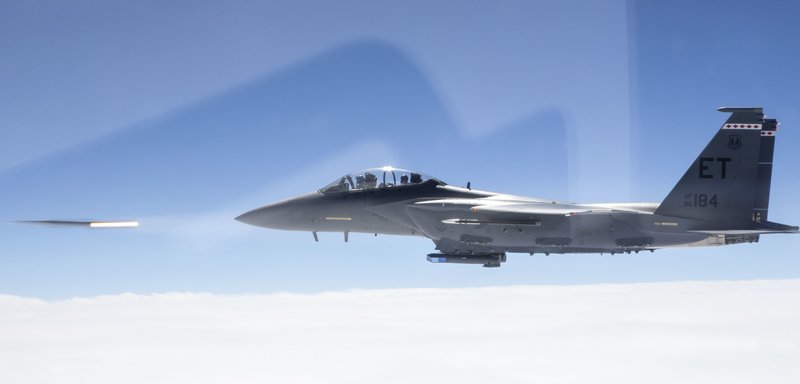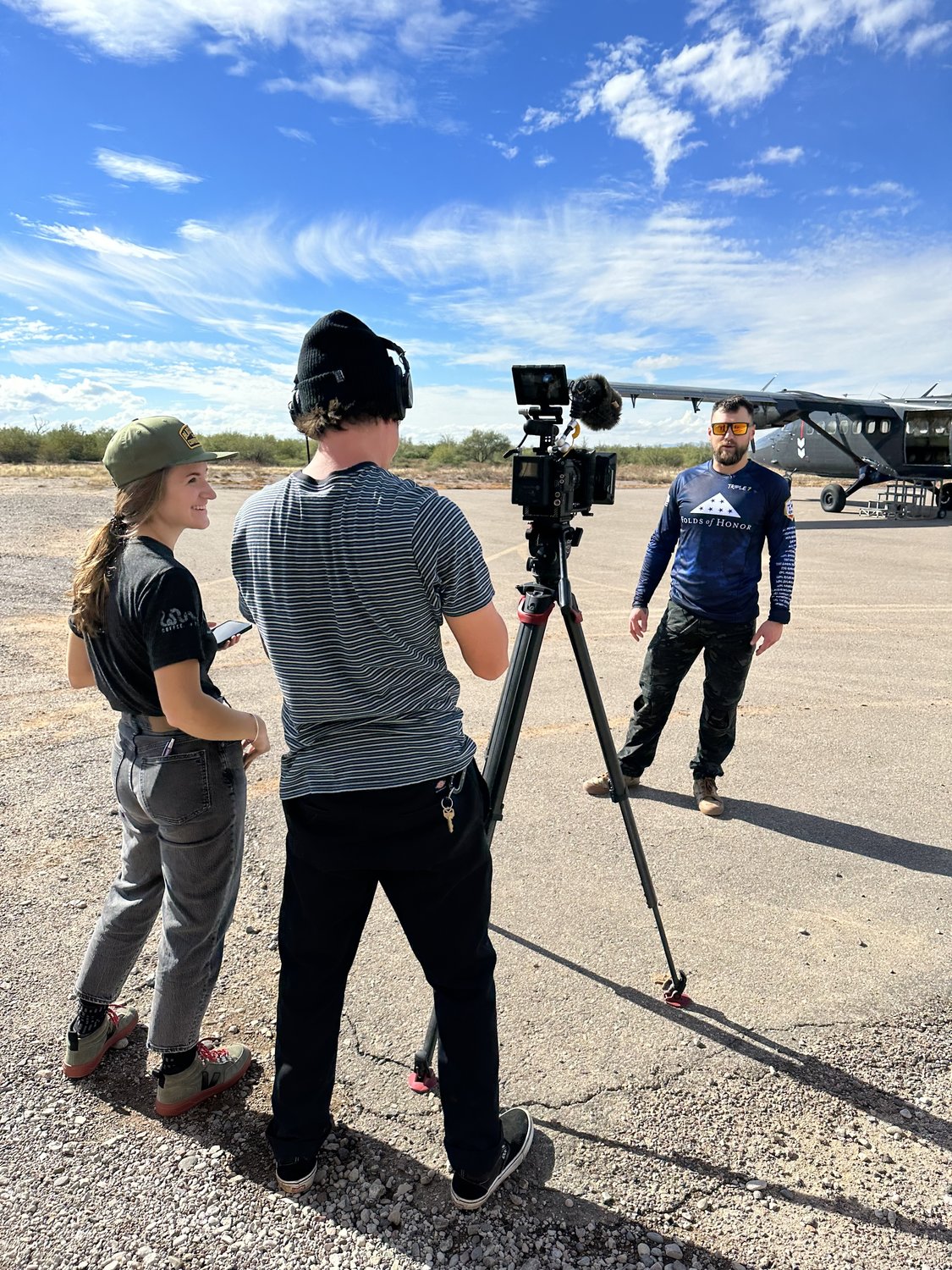As Russia Ups Air Attacks, US-Built NASAMS Air Defense Missiles Arrive in Ukraine

A Ukrainian defense official said the US had delivered two National Advanced Surface-to-Air Missile System, or NASAMS, batteries to Ukraine as of Monday, Nov. 7, 2022. The US announced the transfer of the systems in July. Kongsberg Defence & Aerospace photo. Composite by Coffee or Die Magazine.
A missile system promised by the US in July is now on the battlefield in Ukraine, a Ukrainian defense official said Monday, Nov. 7.
Ukraine’s defense minister, Oleksii Reznikov, said that National Advanced Surface-to-Air Missile System batteries, or NASAMS, had arrived in Ukraine. An air defense system from Spain had also arrived, Reznikov said.
“These weapons will significantly strengthen #UAarmy and will make our skies safer,” Reznikov tweeted. “We will continue to shoot down the enemy targets attacking us.”
The Pentagon initially promised on July 1 to send two NASAMS batteries to Ukraine and promised six more to the country in late August. The recent delivery of two systems fulfilled the July promise.
The remaining six systems will “be provided later,” a senior defense official said Oct. 31.
Because the Russian air force does not have air superiority over Ukraine, its use of missiles and stand-off weapons has increased in recent months. Though Ukraine has claimed an 80% success rate in shooting down incoming missiles and rockets, the campaign has still caused blackouts and mass casualty events through relentless targeting of civilian utilities and civilian targets like malls.
The Royal United Services Institute, a British defense think tank, says the targeting is deliberate.
"The latest iteration is a more focused and sustainable bombardment of the Ukrainian electricity grid," RUSI researchers wrote in a report released Monday, "blending hundreds of cheap Iranian-supplied Shahed-136 loitering munitions against substations with continued use of cruise and ballistic missiles against larger targets."

An F-15 fires an advanced medium-range air-to-air missile near Eglin Air Force Base, Fla., Feb. 26, 2020. The NASAMS air defense systems delivered to Ukraine fire the AMRAAM which has a range of up to 86 miles and flies at speeds over 3,000 mph. Air Force photo by Tech. Sgt. John Raven.
A dozen countries use NASAMS for ground-based air defense. In the US, NASAMS batteries have protected the airspace above Washington, DC, since 2005.
NASAMS launchers fire a ground-based version of the AIM-120 Advanced Medium-Range Air-to-Air Missile, or AMRAAM. Nearly all US fighter planes, including the F-35, carry the missiles for air-to-air combat.
In addition to the US, 11 other countries — including Norway, Australia, and Spain — protect their homeland with the missile system.
Read Next: Fair Winds and Following Seas, Fast-Attack Sub Chicago

Jenna Biter is a staff writer at Coffee or Die Magazine. She has a master’s degree in national security and is a Russian language student. When she’s not writing, Jenna can be found reading classics, running, or learning new things, like the constellations in the night sky. Her husband is on active duty in the US military. Know a good story about national security or the military? Email Jenna.
BRCC and Bad Moon Print Press team up for an exclusive, limited-edition T-shirt design!
BRCC partners with Team Room Design for an exclusive T-shirt release!
Thirty Seconds Out has partnered with BRCC for an exclusive shirt design invoking the God of Winter.
Lucas O'Hara of Grizzly Forge has teamed up with BRCC for a badass, exclusive Shirt Club T-shirt design featuring his most popular knife and tiomahawk.
Coffee or Die sits down with one of the graphic designers behind Black Rifle Coffee's signature look and vibe.
Biden will award the Medal of Honor to a Vietnam War Army helicopter pilot who risked his life to save a reconnaissance team from almost certain death.
Ever wonder how much Jack Mandaville would f*ck sh*t up if he went back in time? The American Revolution didn't even see him coming.
A nearly 200-year-old West Point time capsule that at first appeared to yield little more than dust contains hidden treasure, the US Military Academy said.












